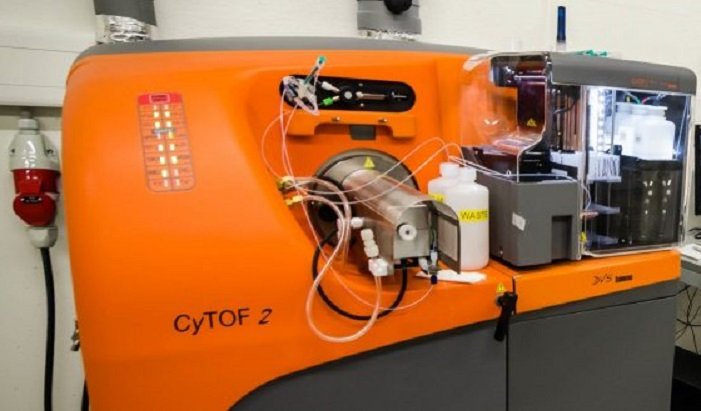Hey science enthusiasts! Ever heard of CyTOF and wondered if it’s some secret code or the latest tech buzzword? Fear not, intrepid reader! Let’s take a quick dive into the fascinating world of CyTOF, where the mysteries of mass cytometry unfold.
What is CyTOF?
CyTOF, or Cytometry by Time-of-Flight, is not a distant planet in a sci-fi novel; it’s a groundbreaking technology in the realm of cellular analysis.
Think of it as a superhero microscope, but instead of using light, it uses metal tags to identify and analyze cells. This means more precision, more data, and a whole lot of scientific coolness.
How Does CyTOF Work?
Alright, imagine you’re at a concert, and each cell is a unique performer. CyTOF hands out special tickets to each cell in the form of metal tags.
These tags are like musical notes that can be detected with incredible precision. The result? A symphony of data that helps scientists understand the cellular composition and function like never before.
Why Choose CyTOF Over Traditional Methods?
Traditional flow cytometry is like listening to your favorite song on a cassette tape, while CyTOF is the high-definition Spotify version.
The traditional methods use fluorescent dyes, which can get a bit crowded and limit the number of parameters you can study.
CyTOF’s metal tags offer a more extensive repertoire, allowing scientists to explore multiple characteristics of a single cell simultaneously.
Applications Galore: Where Does CyTOF Shine?
CyTOF isn’t just for show; it’s a game-changer in various fields. From unraveling the mysteries of the immune system to studying cancer cells with a fine-tooth comb, CyTOF is the go-to tool for researchers aiming to decode the complexities of biology at the single-cell level.
Conclusion
In a world where understanding the tiniest building blocks of life is crucial, CyTOF emerges as a superhero in the lab coat. It’s not just a fancy acronym; it’s a revolutionary tool opening new doors in cellular analysis.
So, the next time someone mentions CyTOF, you can nod knowingly and appreciate the symphony of science happening at the microscopic level.
FAQs About CyTOF
1. Can CyTOF be used for clinical diagnostics?
While primarily a research tool, CyTOF has shown potential in clinical settings, offering valuable insights into diseases and aiding in personalized medicine.
2. How does CyTOF handle sample size and throughput?
CyTOF is ideal for analyzing small sample sizes with high complexity. However, it might not be as suited for high-throughput analyses compared to some traditional flow cytometry methods.
3. What are the main advantages of using CyTOF?
The main advantages include a higher number of parameters, reduced signal overlap, and the ability to analyze rare cell populations with greater precision compared to traditional flow cytometry.
4. Are there any limitations to using CyTOF?
CyTOF has some limitations, such as the cost of instrumentation, the need for specialized training, and potential challenges in sample preparation. It’s essential to weigh these factors against the specific research needs.
5. How has CyTOF contributed to our understanding of diseases like cancer?
CyTOF has played a crucial role in cancer research by allowing scientists to profile tumor cells at an unprecedented level of detail. This has led to a better understanding of tumor heterogeneity and the identification of potential therapeutic targets.

